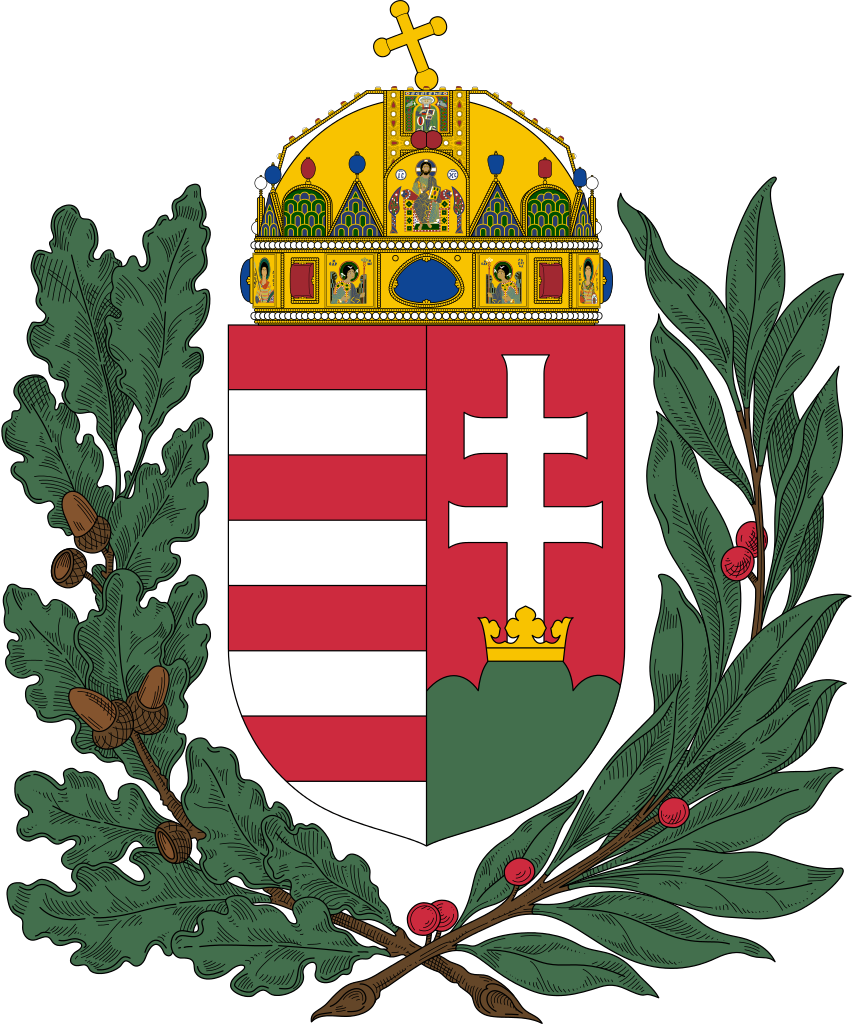Coat of arms of Hungary

A small European state with a long, complex and confusing history, it is the heir to a great empire. The coat of arms of Hungary reflects some of the great pages of the past, the symbols present in the image belonged to the great political and cultural figures of the country.
History and modernity
The main official Hungarian symbol was approved on July 3, 1990, it consists of a shield crowning it with the crown of St. Stephen. The most important elements of the coat of arms of this European power are: the patriarchal cross of silver color and clawed at the ends; gold Crown; green three-headed mountain peak.
In addition, the shield of the coat of arms of Hungary is divided into two parts, differing in color. The left part (for the viewer, from the point of view of heraldry, it is the right part) consists of seven horizontal stripes of scarlet and silver, which are often depicted as red and white stripes. The right part is completely painted in scarlet color, on its background there is a cross resting on a crown, which, in turn, crowns the mountain.
Arpad stripes
The scarlet and silver stripes painted on the modern coat of arms of Hungary received this name. It is associated with the Arpad dynasty, whose representatives ruled in these territories at the end of the 9th - beginning of the 14th centuries. And although these times have long since sunk into oblivion, the so-called Arpad stripes have taken a firm place in Hungarian heraldry. They have been used on private and public symbols for centuries..
Patriarchal cross
Another, no less ancient symbol depicted on the coat of arms of Hungary is the double patriarchal cross. For a long time, it was believed that Prince Istvan, who ruled the country since 997, received it from Pope Sylvester II. Subsequently, he was canonized, and during his lifetime he was titled as the apostolic king of Hungary. This title gave him the right not only to secular, but also spiritual power, the spread of the Catholic faith..
On the bends of history
A similar coat of arms has already been present in the history of Hungary, and more recently, from 1946 to 1949. It was this symbol that the country adopted after liberation from the German fascist invaders. It was also called the coat of arms of Kossuth, and the main difference was the absence of a crown and the shape of the shield, reminiscent of the Polish shield..
Unfortunately, already in 1949, the independent state, which became the Hungarian People's Republic, changed the coat of arms in accordance with the instructions of the leadership of the Soviet Union. In 1989, Hungary was one of the first to set out on an independent path again, and the first step was the return of historical symbols..


